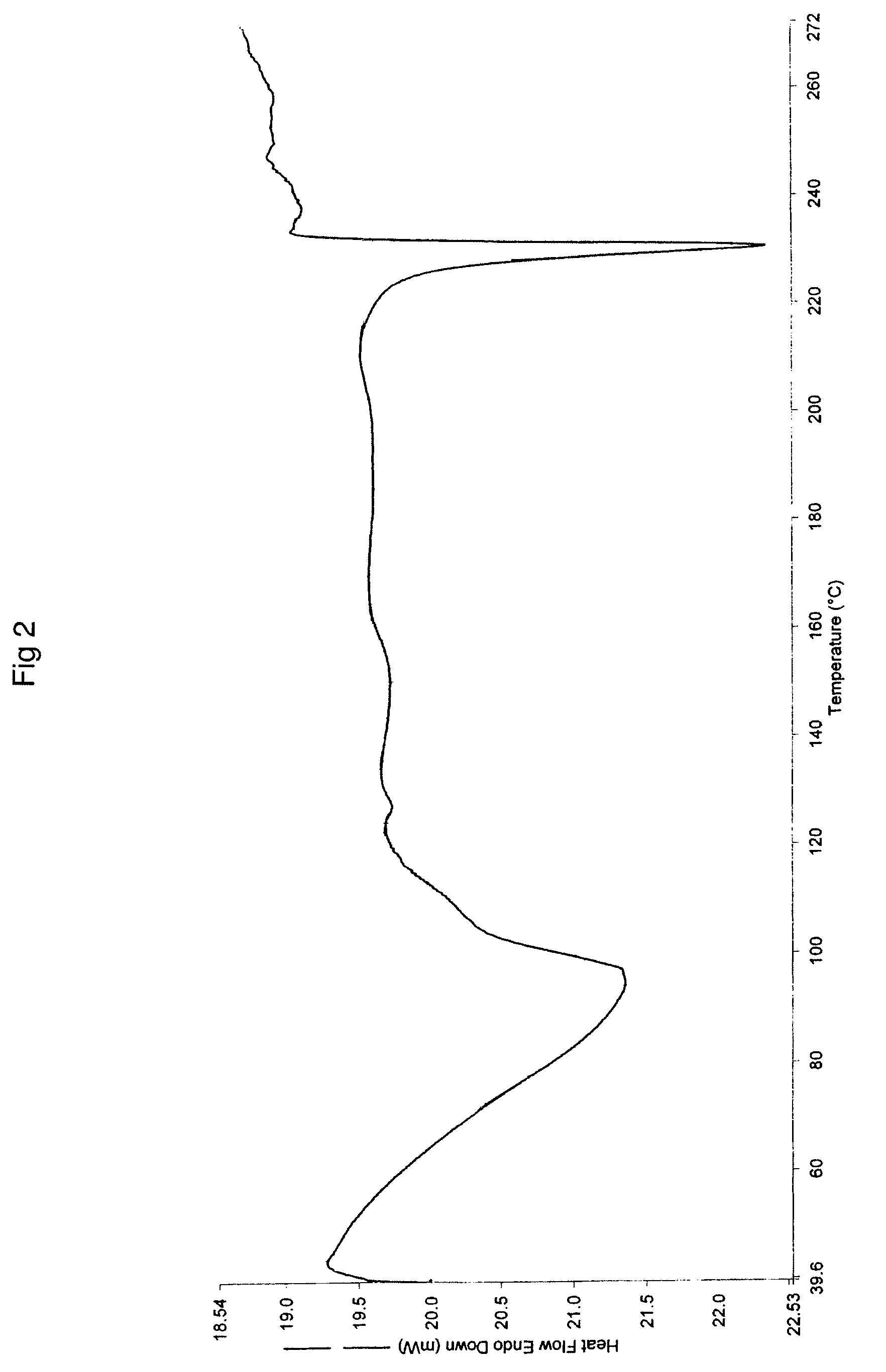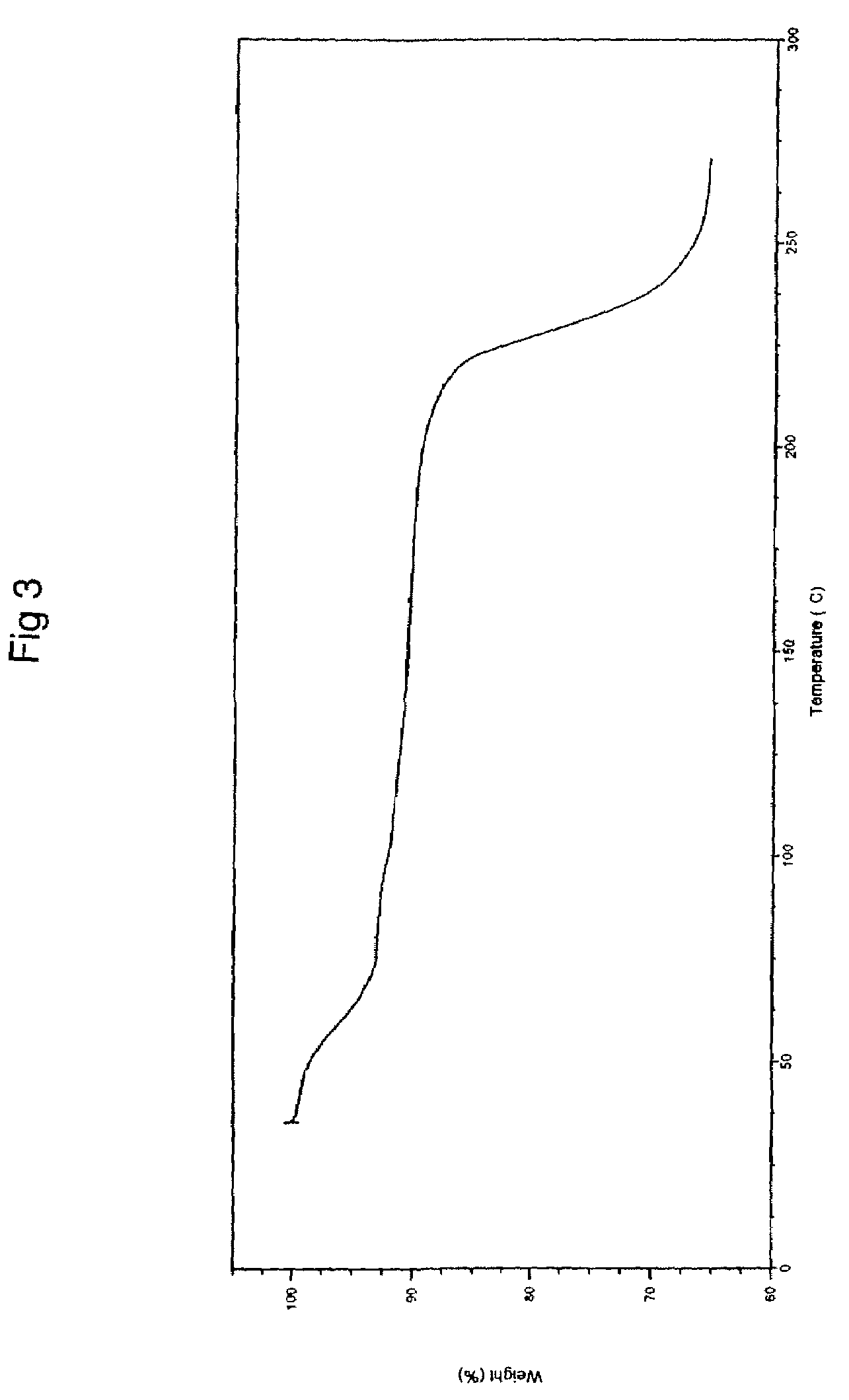Process for preparing topotecan
a technology of topotecan and process, applied in the field of topotecan preparation, can solve the problems of unsuitable industrial scale manufacturing processes
- Summary
- Abstract
- Description
- Claims
- Application Information
AI Technical Summary
Benefits of technology
Problems solved by technology
Method used
Image
Examples
example 1
Preparation of 10-Hydroxy Camptothecin
[0133]6 L of acetic acid and 60 ml of thioanisole were taken into a reactor and there was charged 2 Kg of camptothecin suspended in 6 L of acetic acid. 666 g of platinum oxide was suspended in 6 L of acetic acid in another container and then the suspension was charged to the reactor at 27.5° C. The container was washed with 2 L of acetic acid and then charged into above reactor. The obtained reaction mixture was subjected to evacuation and then a pressure of 45 psi was applied using hydrogen gas, which was then slowly increased to 65 psi at 34.3° C. and the mixture was stirred for 10 minutes. The reaction mixture was heated to 61.9° C. and stirred for 6 hours at 63.7° C. and at 64 psi. Then the reaction mass was allowed to cool to 41.3° C. with stirring for 22 hours at 62 psi. Reaction completion was confirmed by thin layer chromatography (“TLC”). After completion of the reaction, the hydrogen pressure was slowly released and the reactor was flu...
example 2
Preparation of Topotecan Acetate of Formula V
[0136]0.3 Kg of 10-hydroxy camptothecin (Formula IV) prepared according to Example-1 was suspended in 6 L of acetic acid and stirred for 5 minutes. The obtained solution was charged into a reactor and stirred for 20 minutes. 0.51 L of a 40% aqueous solution of dimethyl amine and 0.078 L of a 37% of aqueous solution of formaldehyde were charged into the reactor, the temperature raised to 45.3° C. and the reaction mixture stirred for 2 hours at 45.3° C. The reaction solution was allowed to cool to 34.8° C. and then cooled to 27.5° C. 42 L of acetone was charged into above reaction solution and stirred for 1 hour at 27.5° C. for complete precipitation. The formed solid was filtered and the reactor rinsed with 1.5 L of acetone. The wet solid was washed with the rinsing and then washed with 0.3 L of 1-propanol. The resultant solid was suction dried for 20 minutes and then dried for 5 hours at 52° C. under a vacuum of 690 mm Hg to afford 330 g ...
example 3
Preparation of Topotecan Hydrochloride (Formula I)
[0137]8.7 L of water and 78 ml of 0.1 N hydrochloric acid were charged into a reactor and stirred for 15 minutes. 250 g of topotecan acetate prepared according to Example 2 was charged into the above reactor and stirred for 15 minutes. The obtained solution was filtered through a 0.22-micron filter. The filtrate and 8.8 L of isopropyl alcohol were charged into a flask and concentrated at 35.8° C. under a vacuum of −0.95 Kg / cm2 until 5 L of the solvent remained (distillate quantity 10.5 L). Then the reaction mass was cooled to 27° C. and 50 L of acetone charged. The obtained suspension was stirred for 1 hour at 27° C. and then filtered. The flask was rinsed with 2 L of acetone and the wet solid was washed with the rinsing. The wet solid was suction dried for 30 minutes and then wet solid was suspended in 9 L of acetone in a reactor and stirred for 30 minutes at 26.8° C. The suspension was filtered and the reactor rinsed with 5 L of ac...
PUM
| Property | Measurement | Unit |
|---|---|---|
| 2θ | aaaaa | aaaaa |
| time | aaaaa | aaaaa |
| temperature | aaaaa | aaaaa |
Abstract
Description
Claims
Application Information
 Login to View More
Login to View More - R&D
- Intellectual Property
- Life Sciences
- Materials
- Tech Scout
- Unparalleled Data Quality
- Higher Quality Content
- 60% Fewer Hallucinations
Browse by: Latest US Patents, China's latest patents, Technical Efficacy Thesaurus, Application Domain, Technology Topic, Popular Technical Reports.
© 2025 PatSnap. All rights reserved.Legal|Privacy policy|Modern Slavery Act Transparency Statement|Sitemap|About US| Contact US: help@patsnap.com



